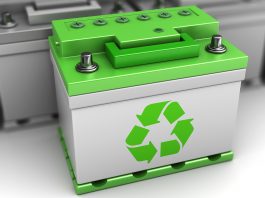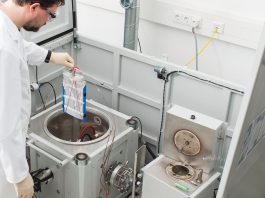The Innovation Platform’s Lorna Malkin spoke to Dr Alistair Davidson, Director of the Consortium for Battery Innovation (CBI), about the potential role of lead batteries in Europe’s automotive and energy storage sectors.
The Consortium for Battery Innovation (CBI) has been conducting research into lead batteries for a quarter of a century. Its members have commissioned research into advanced lead batteries to help meet the needs of global energy storage. Its vision is to be recognised by all stakeholders as the trusted global centre for collaborative, pre-competitive lead battery research and as the authoritative voice on lead battery innovation by taking a leadership role in supporting lead battery research investment and the promotion of innovation.
The Innovation Platform’s Lorna Malkin spoke to the CBI’s Director, Dr Alistair Davidson, about the role that the Consortium plays and the potential role of the batteries moving forwards.
What are the main aims/objectives of the CBI?
The Consortium for Battery Innovation is a global consortium dedicated to improving the performance of lead battery technology. We have members from all over the world, including Europe, North America, South America, and Asia, and all those companies come together to fund research to improve lead battery performance. We currently have two specific goals in terms of our research:
- Improving the performance of lead batteries at partial state of charge, specifically dynamic charge acceptance, which is a key technical parameter for micro and mild hybrids in the automotive industry; and
- Improving cycle life and lifetime for energy storage applications.
We believe that if lead batteries can improve in terms of dynamic charge acceptance and cycle life, then there are huge opportunities for lead batteries in the future in terms of both automotive and energy storage applications.

What is the CBI Battery Match tool and how was it developed?
CBI Battery Match was designed and built by the CBI and its members to help utility companies and end users in the energy sector to easily identify a lead battery system that best meets their requirements.
The battery matchmaker brings together technical information from leading global companies. If you are an end user, utility company, or renewable energy storage company, then you can find this tool on the CBI website and enter the technical information about the system that you are looking to develop. Our sophisticated algorithm then calculates the best lead battery for your system. It will also pair the company with CBI members who provide those batteries, meaning that it is a great way of bringing our members together with the energy storage sector.

How do you see the battery energy storage market developing over the next ten years?
All the forecasters would agree that there is a huge potential for batteries in the energy storage sector of the future. It is clear that energy storage will increase, and batteries will be key to that. However, it is likely that the increase in demand for batteries, particularly in energy storage, will be so substantial that demand will not be met using one technology alone; a range of technologies will be required. Lithium-ion has great strength in these applications, and will obviously be a key player, but the only other technology that can meet all the technical requirements at a mass market scale is lead batteries. Furthermore, as a technology which is a model for circular economy, with almost 100% recycled at end-of-life in Europe, lead batteries have an added sustainability advantage. Thus, for energy storage at least, lead and lithium will be the key players.
What are the latest developments in lead battery energy storage? What applications will lead batteries be used for?
Lead batteries are increasingly being used in energy storage; we are witnessing this across a range of different applications. This includes frequency regulation, peak shaving and shifting and in grid-energy storage where we are seeing lead batteries being increasingly used in microgrids in towns and cities, as well as in more remote locations.
Lead batteries have been used for over 100 years; they are incredibly reliable and robust, and they are very well suited for remote situations, meaning that they are a very good fit for microgrids. But our research is pushing the boundaries of lead batteries for a range of applications, from grid scale utility duty cycles to residential solar plug and play systems.
What are the key differences between lithium-ion and lead-acid batteries in terms of manufacturing, performance and cost?
As a consortium, we do not specifically comment on costs, but I know of a recently released report by Ricardo which showed that lead batteries were up to four times cheaper than lithium-ion for automotive applications. In terms of manufacturing, lead batteries have a very established manufacturing infrastructure, particularly in Europe and North America. That is very much driven by the fact that up to 100% of lead batteries are collected and recycled at the end of their life, with the recycled materials used to manufacture new batteries. Therefore, in terms of manufacturing in Europe and North America there is a closed loop.
In terms of performance, lithium-ion clearly has great strengths, it is a fantastic technology. Lead batteries, however, have increased their performance significantly. Indeed, the lead battery of today is significantly improved compared to the lead battery of ten or 20 years ago. This has involved the development of advanced lead batteries, which have a range of performance enhancements. These batteries can involve the use of new additives such as carbon, but can also include maintenance free batteries, such as AGM and EFB batteries, and new architectures such as bipolar batteries which are also being developed. These batteries have significant performance enhancements in aforementioned areas, such as dynamic charge acceptance, cycle life, and lifetime for energy storage applications.
Another real benefit of lead batteries is that there are no resource availability issues. Because of the very high end of life recycling rate, almost 100%, the majority of the demand can be met using recycled material. Any increase in demand can then be met using primary materials.

What are the latest developments in dual-chemistry energy storage?
Generally speaking, demand for batteries is going to increase in the future, and all types of technologies will be needed to meet that demand, regardless of whether you are looking at energy storage or the automotive sector. In the latter, dual battery systems are now being used in a lot of vehicles. For example, electric vehicles have a lithium-ion propulsion battery, but virtually all electric vehicles also have a lead battery on board which acts as something of a backup. Thus, if the main propulsion battery were to fail, the lead battery would take over and power the safety features so that the car can safely pull over. Dual battery systems have been used in battery electric vehicles for some time.
In terms of energy storage, there is now an increased use of two types of battery technology, where the strength of both technologies can be harnessed in order to provide a more affordable system. For example, a GS Yuasa project based in Portsmouth International Port is using lead and lithium batteries together and is exploring how they can optimise battery performance for grid stability as well as how they can increasingly integrate renewable energy storage into the energy market. We expect to see an increasing number of hybrid systems in the future.
In terms of establishing a circular economy for batteries, which battery materials offer the greatest advantage? What challenges need to be addressed in order to roll out more sustainable battery technologies in the future?
Over 70% of the rechargeable battery market is still lead batteries, so it is still the dominant technology in terms of market share. Lead batteries also really stand out in terms of recycling; they are a product designed for complete end of life recycling and every component can be recycled at the end of life. As I have mentioned, in Europe and North America up to 100% of those batteries are collected at the end of their life and recycled for manufacturing new batteries for applications like automotive and energy storage. That closed loop is a model example of the circular economy in action and is something that other battery technologies do not have. Improving the recycling of other technologies, like lithium-ion, is thus crucial for the future.
Dr Alistair Davidson
Director
Consortium for Battery Innovation (CBI)
info@batteryinnovation.org
https://batteryinnovation.org/
Please note, this article will also appear in the sixth edition of our quarterly publication.









